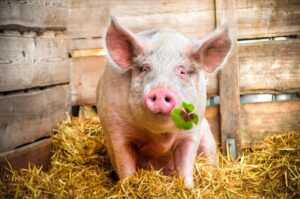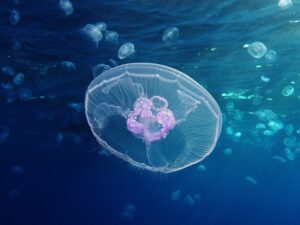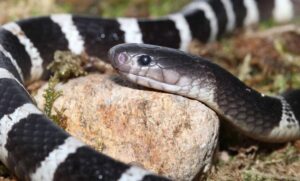Every day, we typically only encounter small birds. However, there are some “giant” bird species that are several hundred times the size and weight of a sparrow or a nightingale. Join KnowAllAnimals to explore The Largest Birds in the World: Top 10 Biggest Species in the following article.
1. The Largest Birds in the World: Top 10 Biggest Species
The largest birds on Earth are usually flightless. They have dense bones and a sturdy body. This evolutionary adaptation has allowed them to grow to a size that far surpasses other birds. In return, their legs can run at incredible speeds to escape predators. Specifically:
1.1. Common Ostrich
- Kingdom: Animalia
- Phylum: Chordata
- Class: Aves
- Infraclass: Palaeognathae
- Order: Struthioniformes
- Family: Struthionidae
- Genus: Struthio
- Species: S. camelus
Reference: https://en.wikipedia.org/wiki/Common_ostrich
The Common Ostrich (Struthio camelus) is a species of running bird native to Africa.
This species has a very distinct physique, with a long neck, long legs, and a top speed of 65 km/h (40 mph). Its scientific name comes from the Greek word for “camel bird.” In its scientific name, “camelus” refers to the harsh natural environment in which they live.
Common ostriches weigh from 90–130 kg (200–287 lbs), with some male ostriches being recorded as weighing up to 155 kg. Adult male ostriches have feathers that are primarily black with some white spots on their wings and tail. Female and young ostriches have a light brownish-gray color with some white spots.
Male ostriches use their small, vestigial wings to perform a mating dance and to shelter their young. Their feathers are soft and are different from the feathers of flying birds. They still have claws on their two wings.
Their strong legs are featherless. Their feet have two toes, with one being larger and looking like a horse’s hoof. This unique feature helps the ostrich run better. With thick, black eyelashes, an ostrich’s eyes are the largest of any living terrestrial animal.
At adulthood (2-4 years), male ostriches are 1.8–2.7 m (6–9 feet) tall, and females are 1.7–2 m (5.5–6.5 feet) tall. In their first year, young ostriches grow about 25 cm (10 inches) per month, and by one year of age, an ostrich weighs 45 kg (100 lbs).
They mainly eat seeds and plants, and sometimes eat small animals like crickets. They primarily forage for food during the day. Since they have no teeth, they swallow pebbles to help them grind food in their gizzard. They can go for a long time without water, relying only on the moisture from the plants they eat. However, they do like water and often bathe.
With their keen sense of hearing and sight, they can detect predators like lions from a great distance. Ostriches are classified as a dangerous animal in Australia, America, and Britain.
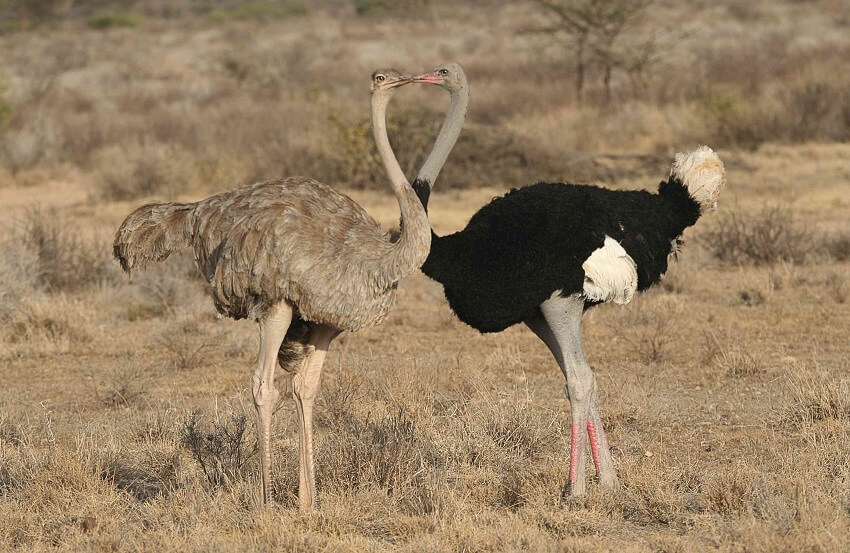
1.2. Cassowary
- Kingdom: Animalia
- Phylum: Chordata
- Class: Aves
- Infraclass: Palaeognathae
- Order: Casuariiformes
- Family: Casuariidae
- Genus: Casuarius Brisson, 1760
Reference: https://en.wikipedia.org/wiki/Cassowary
The cassowary, or Australian cassowary, or New Guinea cassowary, is a species of running bird from the family Casuariidae, living in Australia and New Guinea, along with some neighboring islands.
Their bodies are about 1.2m tall. They have wings but cannot fly; they can only run. When running, they raise their two wings and flap them to maintain balance. They are fast over short distances but are also good at jumping and are excellent swimmers. Their necks are featherless, revealing red and blue wattles. This species of ostrich can run at a speed of 50 km/h through dense forests and jump as high as 1.5m.
A large casque on the top of their head is a distinctive feature of this ostrich species, and it is also a way for them to attract a mate during the breeding season. The little toe of the cassowary has a long, sharp claw. When in danger, they often become agitated and use their claws to attack enemies. Disputes also frequently occur within the flock. Cassowaries that destroy farms and crops can injure people, and just one kick can be fatal to dogs, horses, etc.
In the 19th century, this species was hunted rampantly, so it was once on the verge of extinction. Today, the number of wild individuals is no longer large, and we can only admire them in zoos. In 2007, the cassowary was recorded in the Guinness Book of World Records with the title of “the most dangerous bird in the world.”
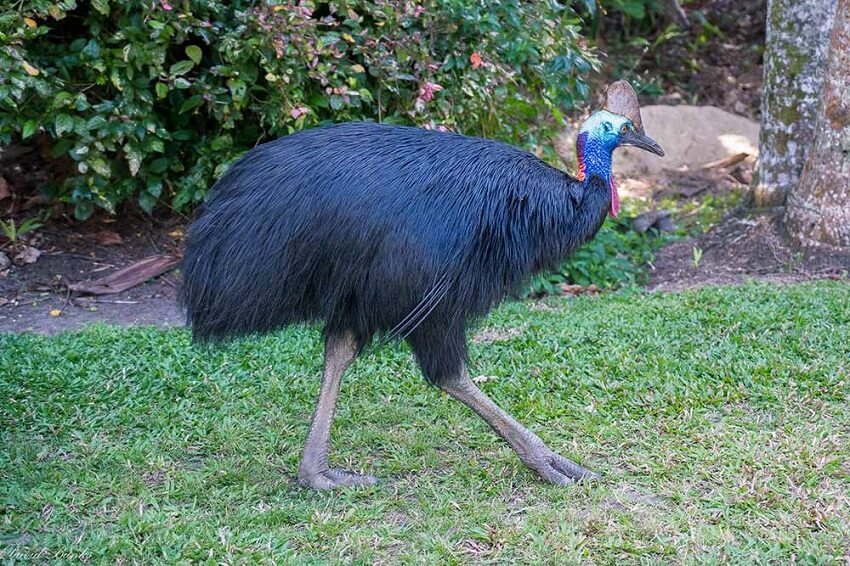
1.3. Emu
- Kingdom: Animalia
- Phylum: Chordata
- Class: Aves
- Infraclass: Palaeognathae
- Order: Casuariiformes
- Family: Casuariidae
- Genus: Dromaius
- Species: D. novaehollandiae
Reference: https://en.wikipedia.org/wiki/Emu
The Emu (Dromaius novaehollandiae) is a species of bird belonging to the family Casuariidae of the order Casuariiformes. They are the second-largest bird species by height, after their relative, the common ostrich.
This species is endemic to Australia, where it is the largest native bird and the only surviving member of the genus Dromaius. Their range covers most of the Australian continent, but subspecies on Tasmania, Kangaroo Island, and King Island became extinct after Europeans settled in Australia in 1788.
Emus are flightless birds with soft, brownish feathers on their heads and necks, with long necks and legs, and three toes. They can grow to be almost 2m tall. Emus can travel very long distances and, when necessary, can sprint at a speed of 50 km/h. They eat a wide variety of plants and insects but are known to be able to go without food for many weeks. They do not drink water regularly, but they drink a lot of water when they have the chance. Their average body weight is about 40 – 50 kg.
Breeding occurs in May and June, and competition for a mate among females is common. A female can mate multiple times and lay multiple clutches of eggs in one season.
The male does the egg incubation; throughout this process, he barely eats or drinks and loses a significant amount of body weight. The eggs hatch after about 8 weeks, and the young are raised by their father. They reach their maximum size after about 6 months but can remain as a family until the next breeding season.
The Emu is an important symbol in Australian pop culture, appearing on the national coat of arms and on some coins. This bird is also prominent in indigenous mythology.
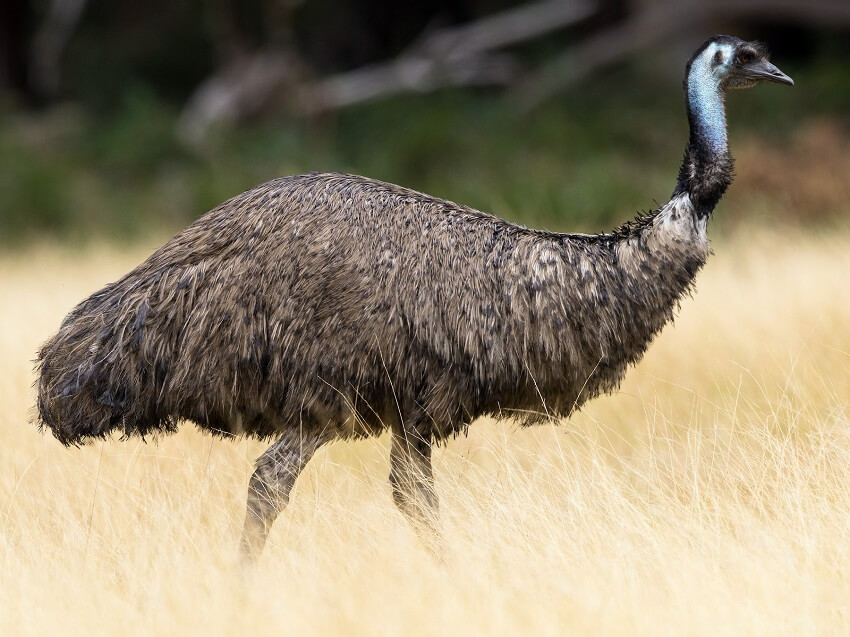
1.4. Emperor Penguin
- Species: A. forsteriKingdom: Animalia
- Phylum: Chordata
- Class: Aves
- Order: Sphenisciformes
- Family: Spheniscidae
- Genus: Aptenodytes
Reference: https://en.wikipedia.org/wiki/Emperor_penguin
The Emperor Penguin (Aptenodytes forsteri) is a species of bird in the family Spheniscidae. They are the largest and heaviest of all penguin species currently existing in the Antarctic.
Males and females have similar feathers and size, reaching a height of 122 cm (48 inches) and weighing between 22–45 kg (48–99 lbs). Their heads and backs are black; their bellies and feet are white; their chests are a pale yellow, and their ears are a bright yellow. They have a streamlined body. Penguins cannot fly, and they have small, flat wings and webbed feet that are adapted to an aquatic environment.
The Emperor Penguin’s daily diet consists of fish, but they also sometimes eat crustaceans, krill, mollusks, and squid. While hunting, this species can dive underwater for over 18 minutes and reach a depth of up to 535 m (1,755 feet).
Emperor Penguins are famous for their annual journeys to mate and raise their young. These penguins only reproduce in the winter in Antarctica. They must travel a long distance of about 50–120 km (31–75 miles) across the ice to reach the breeding grounds, where thousands of individuals gather.
The females will lay a single egg, and then the male will take on the task of incubating the egg while the female goes out to sea to forage for food. After that, the male and female will take turns finding food in the sea and caring for the chick. The lifespan of an Emperor Penguin is 20 years, although some can live up to 50 years.
Research results from the Woods Hole Oceanographic Institution in January 2009 suggested that Emperor Penguins could become extinct by 2100 due to climate change on Earth.
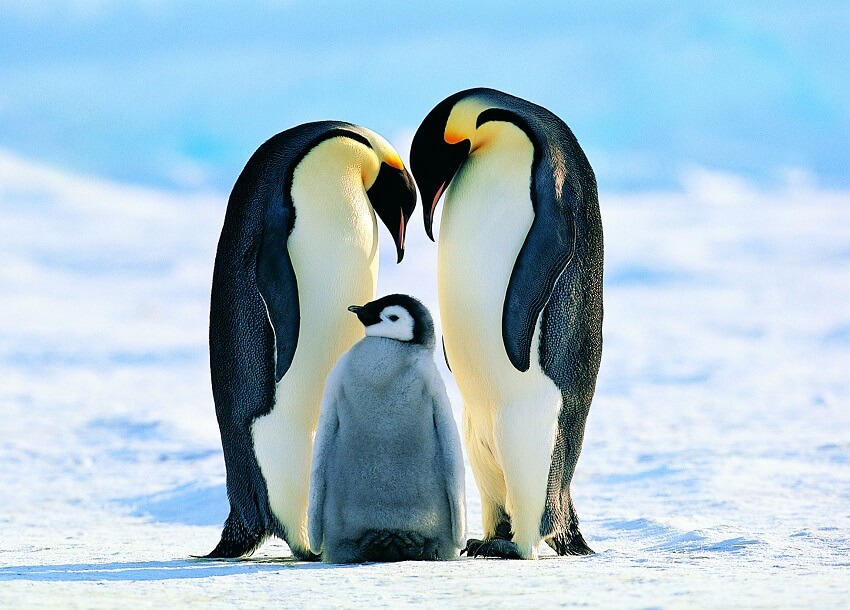
1.5. Greater Rhea
- Kingdom: Animalia
- Phylum: Chordata
- Class: Aves
- Infraclass: Palaeognathae
- Order: Rheiformes
- Family: Rheidae
- Genus: Rhea Brisson, 1760
Reference: https://en.wikipedia.org/wiki/Rhea_(bird
The Greater Rhea (Rhea) is the only genus of South American ostrich in the family Rheidae, consisting of two species of birds living in South America.
This species has a smaller body size than the common ostrich but is larger than the emu. Their diet consists mainly of plants and insects. They live in the grasslands of Argentina, Brazil, and Bolivia.
The Greater Rhea is a large… flightless bird with a brownish-gray coat, long legs, and a long neck, which makes it look similar to the common ostrich. They can grow up to 1.7 m (5.5 feet) tall and weigh up to 40 kg (88 lbs).
The wings of this species are large for a flightless bird and spread wide when running, acting like sails. Unlike most other birds, the Greater Rhea only has three toes. Their tarsal bones have horizontal plates on the front. They also store urine separately in an extension of their cloaca.
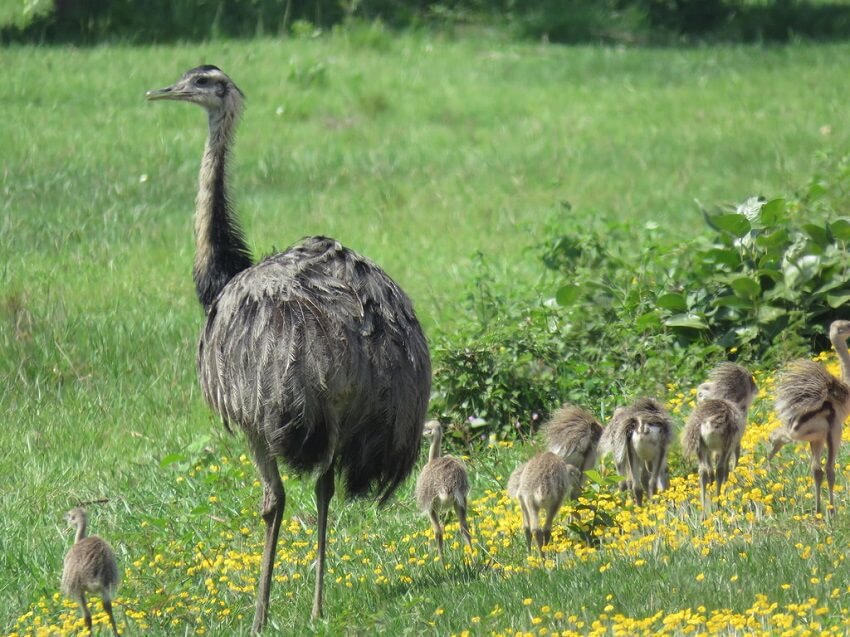
1.6. Great Indian Bustard
- Kingdom: Animalia
- Phylum: Chordata
- Class: Aves
- Order: Otidiformes
- Family: Otididae
- Genus: Ardeotis
- Species: A. nigriceps
Reference: https://en.wikipedia.org/wiki/Great_Indian_bustard
The Great Indian Bustard (Ardeotis nigriceps) is a species of bustard found on the Indian subcontinent. This large bird has a horizontal body, long legs, and is one of the heaviest flying birds.
The Great Indian Bustard is unmistakable, with its black cap that contrasts with its pale head and neck. Its body is brown with a mottled black patch. The male is a darker sandy brown and has a black breast band during the breeding season. The top of its head is black with a crest that inflates when the male displays. In the female, which is smaller than the male, the head and neck are not pure white, and the breast band is rudimentary, broken, or absent.
Among the bustard species, this bird is only smaller than the kori bustard and the great bustard in size. It is also the largest terrestrial bird in its native range. The Great Indian Bustard is about 1 meter (3.3 feet) tall with a slightly long neck and fairly long legs.
The female, like most members of the bustard family, is significantly smaller. The male has a well-developed gular pouch, which inflates when it calls during displays and helps produce a deep, resonant call.
The Great Indian Bustard has been listed as Critically Endangered on the IUCN Red List since 2011. This species is protected under the Indian Wildlife (Protection) Act of 1972.
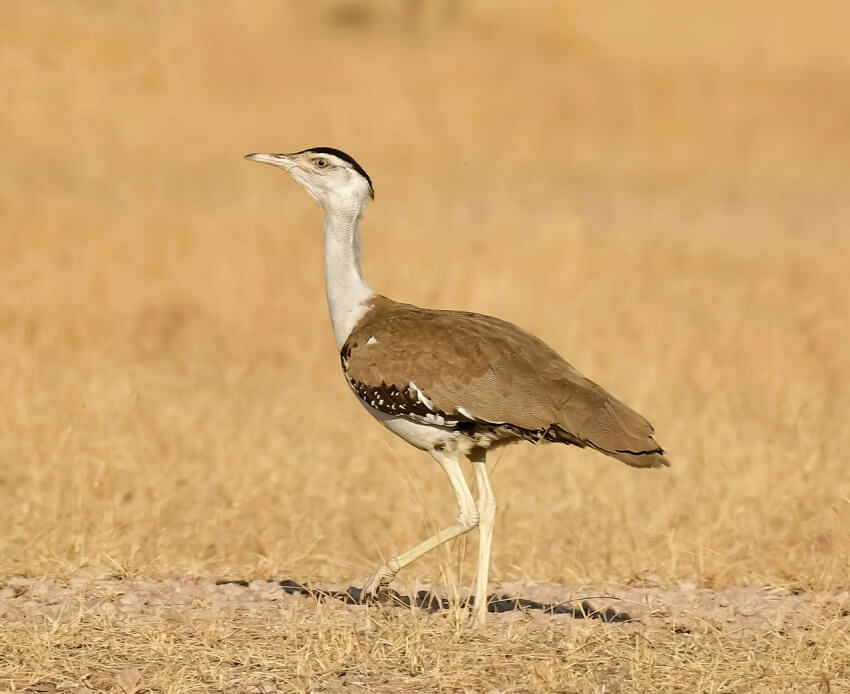
1.7. Andean Condor
- Kingdom: Animalia
- Phylum: Chordata
- Class: Aves
- Order: Accipitriformes
- Family: Cathartidae
- Genus: Vultur
- Species: V. gryphus
Reference: https://en.wikipedia.org/wiki/Andean_condor
The Andean Condor is a species of bird in the New World vulture family.
This species is distributed in South America in the Andes mountain range, including the Sierra Nevada de Santa Marta mountains. To the north, its range begins in Venezuela and Colombia, where it is extremely rare, and then continues south along the Andes in Ecuador, Peru, and Chile, through Bolivia and western Argentina to Tierra del Fuego.
In the early 19th century, the Andean Condor bred from western Venezuela to Tierra del Fuego, along the entire chain of the Andes, but its range has been significantly reduced due to human activity. It is the largest flying bird in the world by combined weight and wingspan. They have a maximum wingspan of 3.3 meters (11 feet) and can weigh up to 15 kg (33 lbs). The Andean Condor is considered the largest predator bird in the world.
The Andean Condor is primarily a scavenger, eating carrion. They prefer large carcasses, such as those of deer or cattle. They reach sexual maturity at 5 or 6 years of age and nest at altitudes of up to 5,000 meters (16,000 feet), usually on inaccessible rock ledges.
Typically, they lay one or two eggs per clutch. This is one of the longest-living bird species in the world, with a lifespan of more than 70 years in some cases.
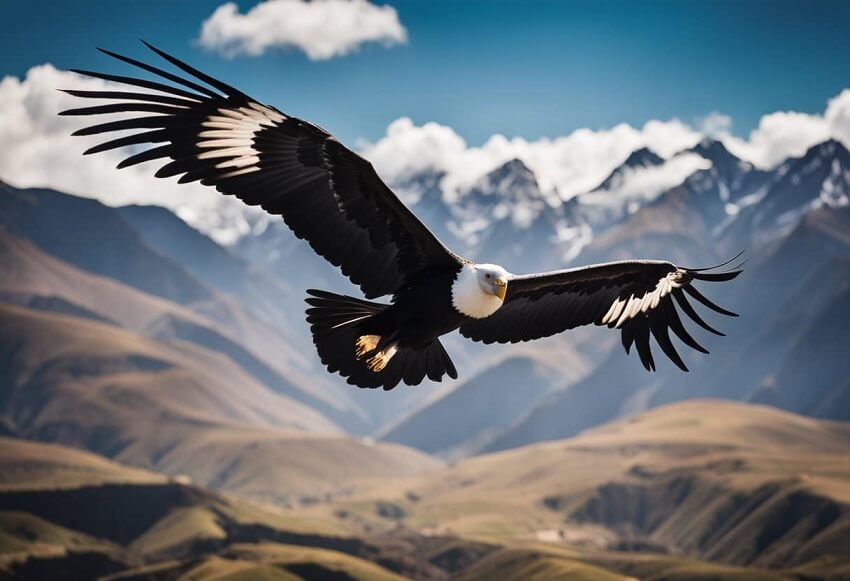
1.8. Dalmatian Pelican
- Kingdom: Animalia
- Phylum: Chordata
- Class: Aves
- Order: Pelecaniformes
- Family: Pelecanidae
- Genus: Pelecanus
- Species: P. crispus
Reference: https://en.wikipedia.org/wiki/Dalmatian_pelican
The Dalmatian Pelican (Pelecanus crispus), also known as the curly-headed pelican, is the largest member of the pelican family and one of the heaviest flying birds in the world.
With a wingspan that typically ranges from 2.7–3.2 m (9–10.5 ft), it is ranked among the largest flying birds. These pelicans are known for their graceful flight and often move in synchronized flocks.
Their range extends across Central Asia, from the eastern Mediterranean in the west to the Taiwan Strait in the east, and from the Persian Gulf in the south to Siberia in the north. They are short- to medium-distance migratory birds, traveling between breeding and wintering grounds.
Like other pelicans, their diet consists mainly of fish, and the males are larger than the females. The curly nape feathers, gray legs, and silvery-white plumage are prominent features, and their wings are a solid gray when flying. However, adults have a duller coat in the winter, making them look more like a great white pelican.
Their hoarse calls become more pronounced during the mating season. They breed across the Palearctic region from southeastern Europe to Russia, India, and China in marshes and shallow lakes. They often return to their traditional breeding sites, where they are less social than other pelican species. Their nests are rudimentary piles of vegetation placed on islands or in dense thickets.
The population of this species declined sharply in the 20th century, partly due to land use, disturbances, and poaching. A core population still exists in Russia, but in the Mongolian range, they are critically endangered.
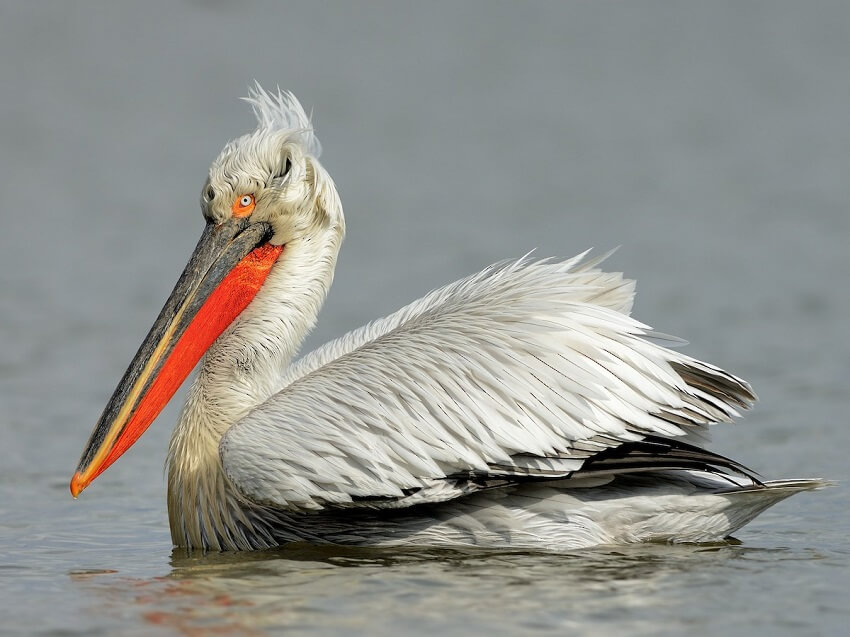
1.9. Mute Swan
- Kingdom: Animalia
- Phylum: Chordata
- Class: Aves
- Order: Anseriformes
- Family: Anatidae
- Genus: Cygnus
- Species: C. olor
Reference: https://en.wikipedia.org/wiki/Mute_swan
The Mute Swan (Cygnus olor) is a member of the Anatidae family of waterfowl. The name “mute” comes from the fact that they are less vocal than other swan species.
With a length of 125–160 cm (49–63 inches), this large swan has a completely white coat with an orange beak outlined in black. They can be identified by the prominent lump on top of their beak, which is larger in males.
This is the second-largest species of waterfowl after the trumpeter swan, although a male mute swan can easily match or even exceed a male trumpeter swan in mass. Among the standard measurements of the mute swan, the wingspan measures 53–62.3 cm, the tarsus is 10–11.8 cm, and the beak is 6.9–9 cm. Their plumage is white, while their legs are dark gray. The beak of the mute swan is a bright orange, with black around the nostrils and a black nail on the tip of the beak.
The Mute Swan is one of the heaviest flying birds still in existence. In some studies from the United Kingdom, males (called cobs) were found to have an average weight of about 10.6–11.87 kg (23–26 lbs) with a weight range of 9.2–14.3 kg, while the slightly smaller females (called pens) had an average weight of about 8.5–9.67 kg with a weight range of 7.6–10.6 kg.
Mute Swans can reach a flight speed of up to 88.5 km/h (55 mph) and can reach a takeoff speed of about 48 km/h when running to gain lift.

1.10. Snow Petrel
- Kingdom: Animalia
- Phylum: Chordata
- Class: Aves
- Order: Procellariiformes
- Family: Procellariidae
- Genus: Pagodroma Bonaparte, 1856
- Species: P. nivea
Reference: https://en.wikipedia.org/wiki/Snow_petrel
The snow petrel (Pagodroma nivea) is a seabird that lives in Antarctica and the Southern Ocean.
The snow petrel is one of the largest members of its family, with a similar size to the southern royal albatross. It has one of the longest wingspans of any living bird and one of the furthest ranges of any bird.
A snow petrel’s wingspan is the longest of any living bird, reaching over 3.5 meters (11.5 feet) with an average wingspan of 3.1 meters. Its body length is about 107–135 cm, with females being a little smaller than males.
This bird mates for life and reproduces once every two years. During the breeding season, they occupy loose colonies on isolated island groups in the Southern Ocean. When courting, they spread their wings, wave their heads, and clack their beaks together while making loud calls.
They lay a single white egg with a few spots that is about 10 cm long. The nest is a large bowl built with vegetation from grass and peat. The incubation period lasts 11 weeks, which is one of the longest for any bird.
In the early stages of a chick’s development, the mother or father takes turns sitting on the nest while the other parent forages for food. Later, as the chick matures, both parents forage for food and visit the chick at irregular intervals.
The snow petrel spends most of its life flying, only landing to breed and feed. The distance they travel each year is difficult to measure, but a ringed bird was recorded traveling 6,000 km in 12 days.
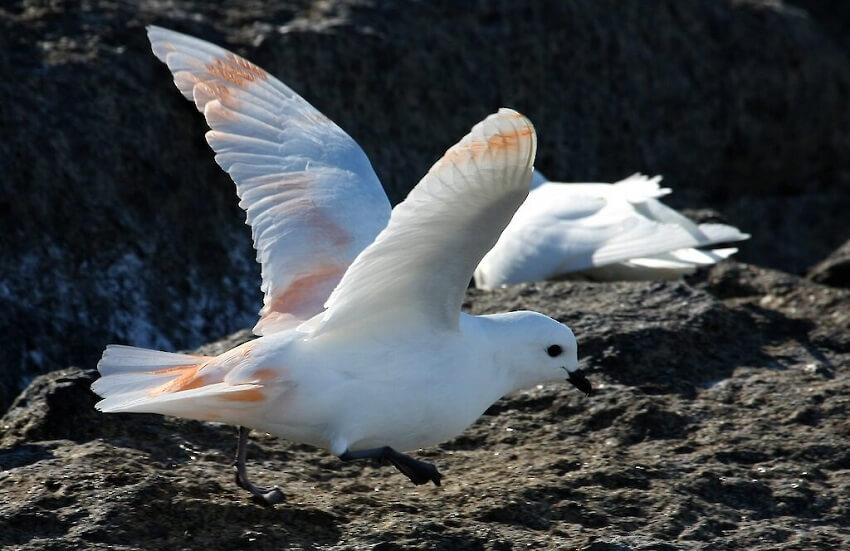
2. Conclusion
This concludes our list of The Largest Birds in the World, as shared by Know All Animals. We hope this article has helped you learn about the characteristics of these giant birds that still exist today. Thank you for reading our article.

